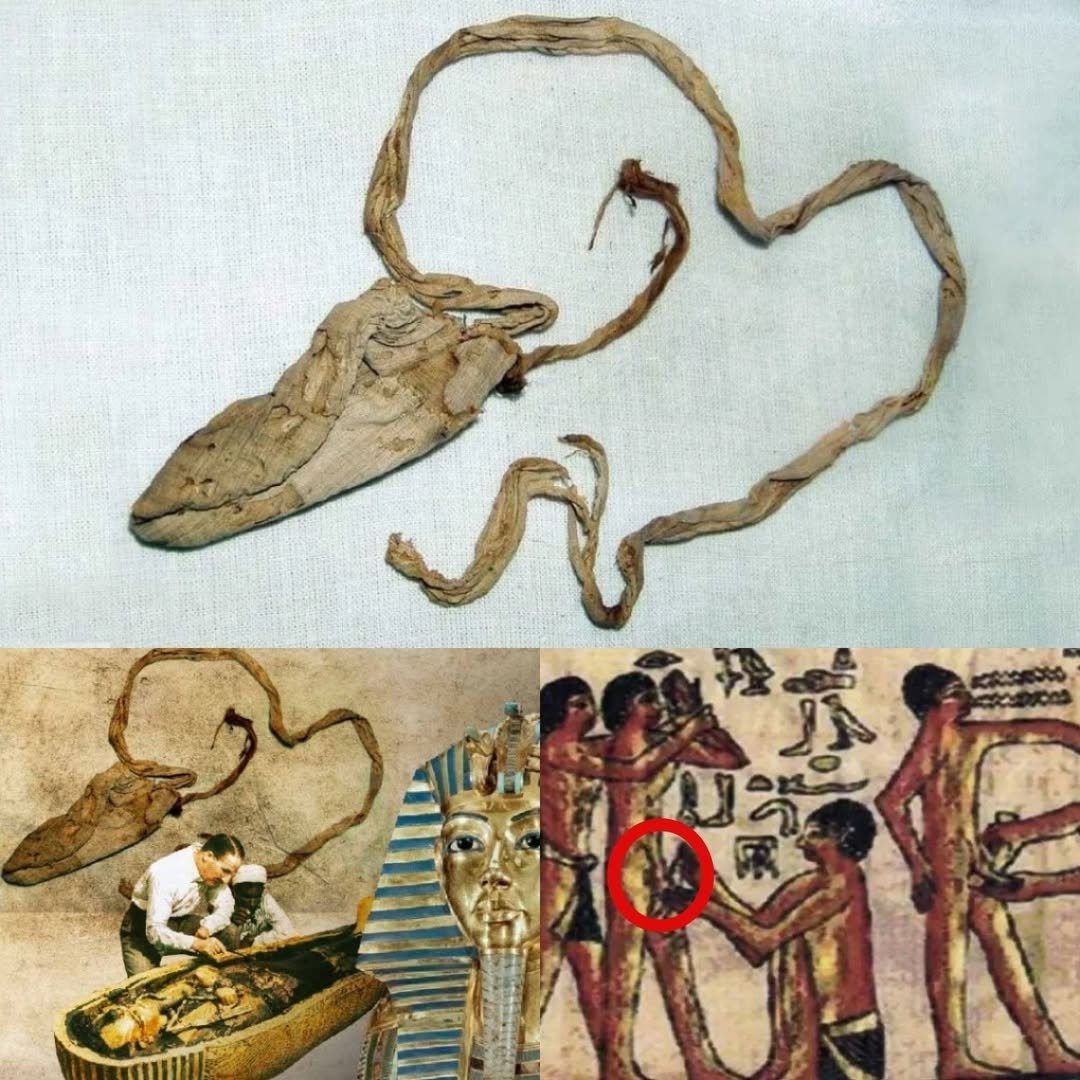Unbelievable Discovery: Tutankhamun’s 3,000-Year-Old Condom

Few names in ancient history spark as much fascination as Tutankhamun, the boy-king of Egypt’s New Kingdom whose tomb, discovered in 1922, remains one of archaeology’s greatest treasures. But beyond the golden mask and lavish artifacts, new findings continue to shed light on his private life. One of the most surprising and provocative discoveries is a 3,000-year-old condom, believed to have belonged to the young pharaoh himself. Crafted from linen and remarkably well-preserved, this tiny relic challenges our assumptions about sexuality, health, and daily life in ancient Egypt.
A Condom from the New Kingdom

The artifact, found among the remains of Tutankhamun’s burial goods, is believed to date back to around 1350 BCE. Unlike modern latex condoms, this version was made from linen sheaths, sometimes coated with oils or resins. Its preservation over three millennia astonishes experts and offers a unique perspective on how ancient societies approached reproduction, disease prevention, and ritual practices.
The discovery is significant because it not only humanizes Tutankhamun but also provides rare evidence of contraceptive and protective methods in the ancient world.
Practical Use or Ceremonial Object?
One of the biggest questions surrounding Tutankhamun’s condom is its purpose. Was it intended for practical use, protecting against pregnancy or disease, or did it serve a ceremonial function in the burial context?
Historians note that in some cultures, condoms and similar coverings were used symbolically in funerary practices, representing fertility, protection, or rebirth in the afterlife. The artifact may therefore straddle both worlds: a tool of intimate life and a ritual object meant to accompany the pharaoh into eternity.
Sexuality in Ancient Egypt
This discovery also opens broader discussions about sexual practices in the New Kingdom. Ancient Egyptians were not strangers to contraception; written texts reference mixtures of honey, acacia, and other natural substances used as spermicides. The existence of a condom suggests that Egyptians may have experimented with multiple methods of control, balancing practicality with symbolic meaning.
For Tutankhamun, whose short reign ended when he was only about 18 or 19 years old, the artifact offers an unusually intimate glimpse into his personal world. It reminds us that even pharaohs—regarded as divine—lived human lives with private needs, desires, and rituals.
A Relic of Innovation

The linen condom also highlights the technological sophistication of the ancient Egyptians. Their skill in textiles, combined with medical and ritual knowledge, allowed them to create protective objects that resonate with modern parallels. While latex and rubber would not be invented until millennia later, this relic demonstrates that the concept of protection during intercourse is far older than many assume.
Conclusion
The discovery of Tutankhamun’s 3,000-year-old condom is more than a curious artifact—it is a provocative reminder that history’s most iconic figures lived lives full of complexity, intimacy, and innovation. Whether used practically or symbolically, the linen sheath reflects the Egyptians’ remarkable ingenuity and the cultural importance they placed on fertility, health, and the afterlife.
Far from trivial, this find expands our understanding of both Tutankhamun and ancient Egyptian society, proving that even the smallest artifacts can reveal the deepest secrets of the past.











